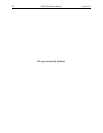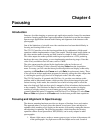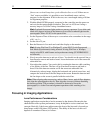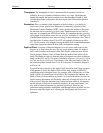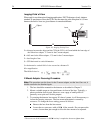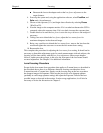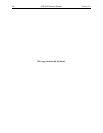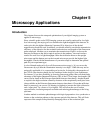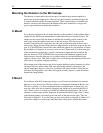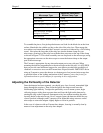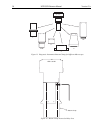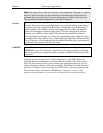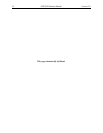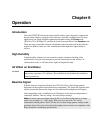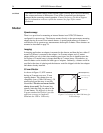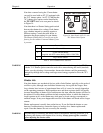
28 NTE/CCD Detector Manual Version 2.A
Mounting the Detector on the Microscope
The detector is connected to the microscope via a standard type mount coupled to a
microscope specific adapter piece. There are two basic detector-mounting designs, the
C-mount (standard) and the F-mount (optional). The C-mount employs a standard size
thread to connect to the detector to the adapter while the F-mount uses a tongue and
groove type mechanism to make the connection.
C-Mount
For a detector equipped with a C-mount thread, use the standard C-mount adapter that is
supplied by the microscope manufacturer to attach the detector to the microscope. The
adapter can be screwed into the detector and then the assembly can be secured to the
microscope using the standard setscrews on the microscope. The detector can be
mounted on the trinocular output port, the side port or the bottom port of the inverted
microscope. When mounting larger detectors perpendicular to the microscope on the side
port, it is ADVISED that you provide some additional support for your detector to reduce
the possibility of vibrations or excessive stress on the C-mount nose. For the bottom port
of the inverted microscope, the C-mount is designed to support the full weight of the
detector, however, IT IS ADVISED that you provide some additional support for the
larger detectors since the detector is in a position where it could be deflected by the
operator’s knee or foot. This kind of lateral force could damage the alignment of the nose
and result in sub-optimal imaging conditions.
Most output ports of the microscope do not require additional optical elements to collect
an image; however, please check with your microscope manual to determine if the
chosen output port requires a relay lens. In addition, all optical surfaces should be free
from dust and fingerprints, since these will appear as blurry regions or spots and hence
degrade the image quality.
F-Mount
For a detector with the F-mount type design, you will need two elements to mount the
detector on your microscope. The first element is a Diagnostic Instruments Relay Lens.
This lens is usually a 1x relay lens that performs no magnification. Alternatively, you
may use a 0.6x relay lens to partially demagnify the image and to increase the field of
view. There is also a 2x relay lens available for additional magnification. The second
element is a microscope specific Diagnostic Instruments Bottom Clamp. Table 1 shows
which bottom clamps are routinely used with each of the microscope types. They are
illustrated in Figure 11. If you feel that you have received the wrong type of clamp, of if
you need a clamp for a microscope other than those listed, please contact the factory.



